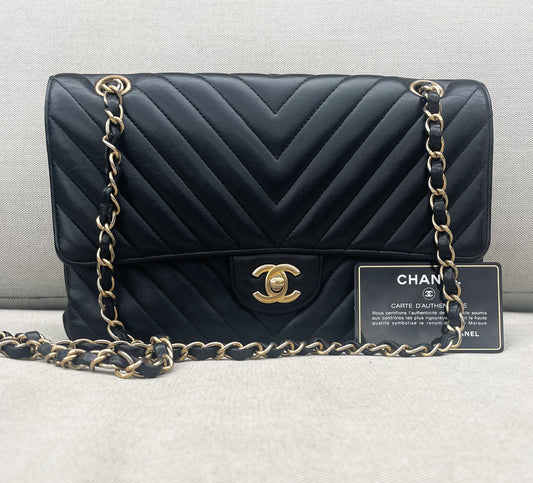Chanel: The Revolution of Elegance and the Secret History of its Iconic Bags
Few names evoke such timeless elegance and such a profound impact on the fashion industry as Chanel . Much more than a simple brand, the House is a true manifesto, a philosophy that freed women from the constraints of the corset to offer them a look that is at once practical, sophisticated, and daring.
Definition and Philosophy of the House of Chanel
Founded by Gabrielle "Coco" Chanel in 1910, initially as a milliner, the House quickly established itself as a pillar of French luxury and style. The essence of Chanel is based on simple but revolutionary principles for its time:
-
Feminine Liberation: Coco Chanel drew inspiration from menswear and comfort, banishing rigid silhouettes. She introduced jersey, tweed, and trousers for women, and popularized the little black dress —a symbol of universal elegance.
-
The Immutable Codes: The brand is defined by a set of strong visual codes: quilting , the camellia , the intertwined chains , the black and white pattern (punctuated by garnet red) and, of course, the intertwined double C.
-
Luxury and Functionality: At Chanel, luxury is never ostentatious. It lies in the quality of the materials, the exceptional craftsmanship, and, above all, in the functionality of each creation, designed for the active, modern woman.
The Handbag: A Revolutionary Act
The history of Chanel bags is a story of independence. Before Coco Chanel, handbags were simple, bulky clutches that women had to carry in their hands, hindering their movements. Mademoiselle wanted an accessory that would allow her to have her hands free , just as men could with their military satchels.
1. 2.55: The Birth of a Legend (1955)
It was in February 1955 that Coco Chanel, at the age of 71, launched the model that would change the world of leather goods: the 2.55 (named after the month and year of its creation).
-
Quilting: Inspired by jockey jackets and the bench cushions in his apartment on Rue Cambon, the diamond quilted pattern is not only aesthetic; it gives the leather a volume that maintains its shape and guarantees greater durability.
-
The Curb Chain: A stroke of genius. The metal chain (often gold) allows the bag to be worn over the shoulder or across the body, freeing up your hands. An eminently feminist and practical gesture.
-
The Inner Secrets: Every detail tells a story: the burgundy lining recalls the uniform of the Aubazine orphanage where she grew up. The zippered pocket under the inner flap is nicknamed the “secret pocket,” where she supposedly hid her love letters. The rectangular clasp is called “Mademoiselle,” a nod to the fact that Gabrielle Chanel never married.
2. The Classic Flap: Legacy Reinvented (Post-1983)
In 1983, the arrival of Karl Lagerfeld as artistic director brought about a major renewal while honoring the heritage. The Kaiser of fashion reinvented the 2.55 to create the Classic Flap model, today often confused with its predecessor:
-
The CC Clasp: The most notable change is the introduction of the iconic clasp with the interlocking double C , which has become the brand's most recognizable logo across the world.
-
The Interlaced Chain: Lagerfeld also introduces braided leather into the chain, adding a new texture and richness, while preserving the original spirit.
3. Lagerfeld's New Icons
During the Lagerfeld era (1983-2019), the family of bags grew, each with a distinct personality:
-
The Boy Bag (2011): Inspired by Arthur "Boy" Capel, Coco's great love, this bag is more structured and androgynous, reflecting a more rock and modern spirit. It seduced a new generation with its bold aesthetic.
-
The Gabrielle (2017): A bag with a supple silhouette, designed to be worn in multiple ways, often with two chains. It symbolizes the duality and complexity of Coco's personality.
-
The Chanel 19 (2019): The last bag designed under Lagerfeld and named after the year it was created. It features oversized quilting and a two-tone (gold and silver) chain, offering a more relaxed and contemporary aesthetic.
More than an Accessory, an Investment
Today, Chanel bags have moved beyond their status as fashion accessories to become real assets . Their prices continue to rise, making classic models like the 2.55 and the Classic Flap collector's items whose value on the second-hand market rivals, or even exceeds, that of some traditional investments.
To own a Chanel bag is to embrace a piece of this revolutionary history, a symbol of freedom and timeless elegance. It is to carry the legacy of a woman who proved that fashion can be both sublime and at the service of life.
And you, which Chanel bag best embodies your own definition of elegance?




